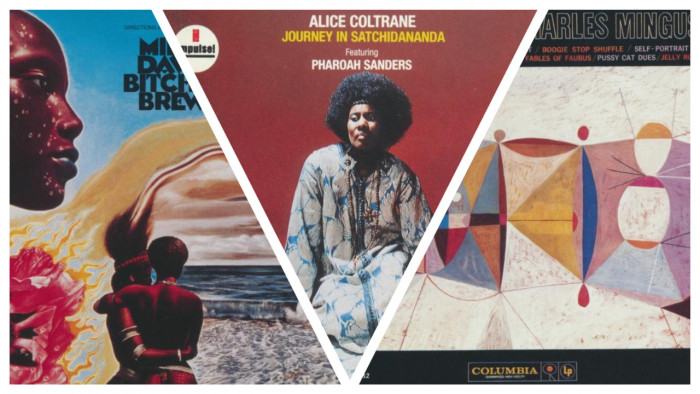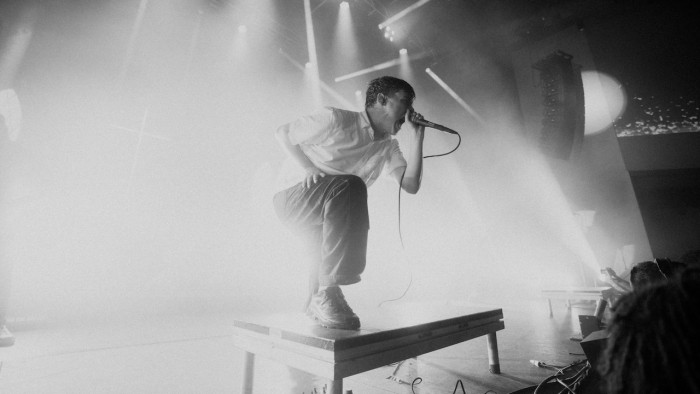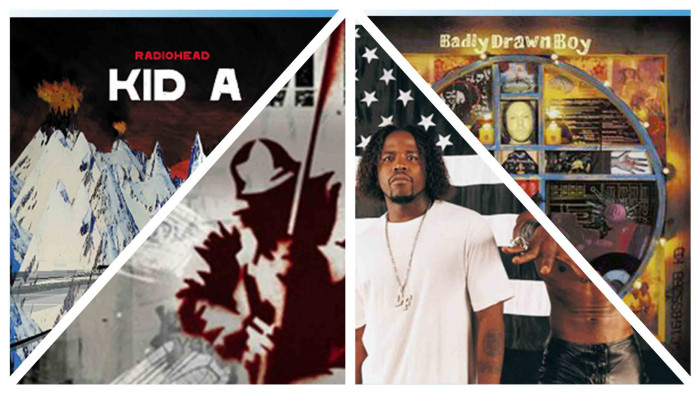DJ Shadow's 'Endtroducing' changed my life, and it can change yours too
A timeless classic which changed the course of music


There is a Spotify link here that contains DJ Shadow’s Endtroducing, which means that one of the greatest albums of all time is simply a mouse movement and a click away. Think about it, a piece of near-perfect art, and all you have to do to hear it is gently press a button and - boom - there it is.
But things were very different in 1999.
In 1999, I still firmly identified as an indie kid, but had started to investigate the existence of other genres, particularly as June of that year saw the launch of Napster. I had an enquiring musical mind, a piece of illegal software, a 56.6k dial-up modem, and I was not afraid to use it (unless my dad wanted to make a phone call).
I have no idea how or why I first decided to investigate DJ Shadow - I must have read something, or one of my friends must have mentioned him - but his name sounded cool, and so I ventured to my local HMV to find a record to buy. I found nothing, and it took a few phonecalls to discover that the only Shadow record available in the big chain’s entire London area was a solitary US import of Pre-Emptive Strike - a collection of early singles which he’d issued at the start of his career. Off I went to Oxford Street, paid my £18 (a truly extortionate amount, even in those days), took it home and unleashed its wares.
It was a mesmerising compilation, with the 12 minute-long In/Flux unlike anything I had heard before, with the four-part What Does Your Soul Look Like suite truly breathtaking.
Therefore, I had to listen to Endtroducing....., his debut album proper, which had come out three years previously and which had been spoken of as his true masterpiece. The problem was, no one seemed to have a copy anywhere. It was like a mythical album - even though I discovered that, upon release, it had reached as high as number 17 in the UK album chart.
And so it was that I turned to Shawn Fanning's new-fangled invention. Readers, I'm sure you cannot imagine such a thing, but back in 1999, to use the internet required serious patience - for it was not a pursuit blessed with speed. Loading a picture could take the best part of a few minutes to arrive down the line via my trusty US Robotics modem. But I had to hear this record, no matter what it took.
For nigh on the next two weeks, I waited until my parents had gone to sleep, 'hooked up' to the internet, and hoped that, come morning light, another track had landed into my 'downloaded' pile via some American user with exceptional music taste. Finally - after many agonisingly premature cut-offs - I had the whole thing*, which I promptly loaded onto my (absolutely cutting-edge) Nomad II mp3 player and took off for a walk.
It was a record that changed my life and will change yours too.
Released in the UK on 16 September 1996 - two months ahead of the US, due to Shadow receiving far greater early buzz on this sceptred isle than in his homeland - the album was created by Californian producer Josh Davis, using nothing but samples from other records - all vinyl, naturally. Of course, sampling had been around since the dawn of hip hop, but this was something on entirely another level, using obscure, often tiny clips from a huge, huge variety of disparate sources, to create a brand new sound collage.
He had achieved this by ‘crate-digging’ - searching round record stores and charity shops, listening to anything and everything - for that discarded record, languishing in a bargain basement bin for 10p - that could hold that magical two seconds of sound required to add that final piece of stardust to a track.
The entire album - fully 63 minutes - was made using the legendary Akai MPC60 sampler, which Davis would load up with his fragments of sound and layer, structure, manipulate and arrange into an entirely new piece of work.
The record stands as an vital piece of music history for three reasons:
1. The sheer time, effort and skill that it must have taken to make the album is almost unfathomable. To pluck out - after hours, days and weeks of searching - the constituent parts without being able to simply make them yourself must have required astonishing levels of persistance, creativity and work.
2. It finally put to bed the decades-long argument of whether sampling was a valid artistic method. For years, some had argued that it was simply stealing the work of others, but Shadow’s record was absolutely undeniable: he was a composer who happened to use existing recordings as his instrument, rather than a violin or a guitar. The record was shot through with humanity, and the emotions that the creator was trying to convey, using elements that - almost certainly - were originally recorded to express a different emotion - they were re-interpreted into something brand new.
3. Even if you disregard points 1 and 2, the album is an incredible journey through practically every emotion and a huge variety of song styles. The sheer, otherworldly beauty of Building Steam With a Grain of Salt; the funky fun of The Number Song, the off-kilter 7-beat elegance of Changeling, the dark and light jazz respectively of the two What Does Your Soul Look Like tracks, the brooding menace of Stem/Long Stem with its heartbreakingly beautiful outro, the blasting beats of Mutual Slump, the simple and yet clever hip hop-meets-gospel brilliance of Organ Donor, the smokey, late-night beauty of Midnight in a Perfect World and the jittering drum and bass of Napalm Brain/Scatter Brain.
It was an album that has inspired many others, been oft-imitated, and spawned a whole cut ‘n’ paste generation yet, more than 20 years on, it has never been surpassed.
Truly cinematic, the record weaves its way through all these styles and emotions, with occasional spoken samples filtering in and out of consciousness: tales of checkers, parking tickets, rollerskating and, of course, on Building Steam With a Grain Of Salt, the narrated outro which sums up the premise of the entire record, and Shadow as an artist, quite beautifully:
“I would like to be able to continue to let what is inside of me - which is, which comes from all the music that I hear, y’know, I’d like for that to come out and it’s like, it’s not really me… it’s kinda… the music’s coming through me.”
Go for a walk, put this record on your listening device, and give it 63 minutes of your undivided attention. Then thank me later.
*I did buy the album later in life when I finally managed to find a copy…








